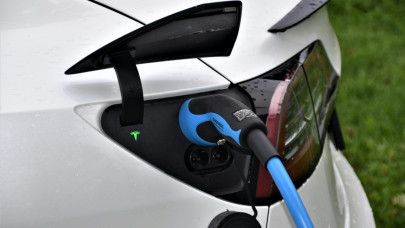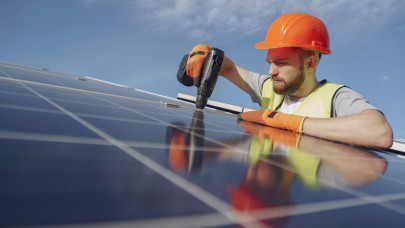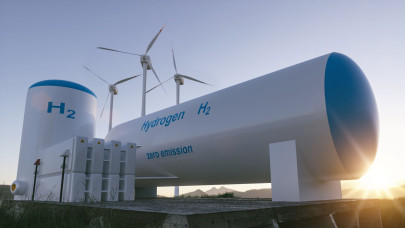What are some of the key challenges that businesses in Romania face when implementing sustainable practices?
Implementing sustainable practices in Romania comes with its own set of challenges, and EY Romania offers support to businesses to navigate and overcome these obstacles. Key challenges faced by businesses in Romania when implementing sustainable practices include:
-Regulatory Complexity: Businesses often encounter complex and evolving regulations related to sustainability and environmental protection. EY Romania helps businesses stay compliant with these regulations by providing regulatory insights, conducting compliance assessments, and offering guidance on best practices.
-Financial Constraints: Implementing sustainable practices may require significant upfront investment, which can be challenging for businesses. EY Romania assists businesses in accessing funding opportunities, such as grants, subsidies, and financing options, to support their sustainability initiatives.
-Supply Chain Management: Ensuring sustainability across the supply chain can be complex, especially for businesses with extensive and diverse supply chains. EY Romania offers supply chain sustainability assessments, audits, and advisory services to help businesses identify and address sustainability risks and opportunities within their supply chains.
-Technology and Innovation: Adopting sustainable technologies and innovation can be daunting for businesses, particularly those lacking expertise in this area. EY Romania provides technology and innovation advisory services to help businesses identify and implement sustainable technologies and solutions that align with their goals and objectives.
-Stakeholder Engagement: Engaging with stakeholders, including customers, employees, investors, and communities, is crucial for the success of sustainable initiatives. EY Romania assists businesses in developing stakeholder engagement strategies, conducting stakeholder consultations, and communicating their sustainability efforts effectively.
In a recent report released by EY, electric cars in Romania have grown by 26%, reaching a market share of 24% in 2023. Can you estimate how the market will look in 2024 and the next 2-3 years?
EY's analysis predicts that Europe will see a significant increase in electric vehicles (EVs) on its roads, with projections exceeding 75 million EVs by 2030. This forecast is supported by the continuous enhancement of EV options and the improving economics compared to traditional petrol and diesel alternatives. Anticipated data, as illustrated in the EY – Euroelectric report titled 'How do we solve the challenge of data interoperability in e-mobility?', suggests that EV sales in Europe will outpace those of other engine types before 2027.
In Romania, the trend towards electric mobility is similarly promising. As of 2023, 'electrified' vehicles, encompassing fully electric and plug-in hybrids and full hybrids with electric propulsion, commanded a notable 24.4% market share, surpassing diesel engine sales by 11.5%.
Specifically, fully electric cars held a market share of 10.7% during the same period, reflecting a steady increase from the previous year's 9.1%. Drawing from the broader trend observed across markets, where countries undergo an S-curve growth trajectory with EV adoption accelerating once it reaches 10%, we anticipate continued robust growth in Romania's electrified car market.
Therefore, in Romania, we expect an annual growth rate of 20-25%, with electrified car sales expected to attain a market share approaching 30% by 2024 and potentially exceeding 50% by 2027. These estimations highlight the growing momentum towards electric mobility in Romania, driven by evolving consumer preferences increasingly favoring sustainable transportation solutions.
Is Romania ready for the transition to electric cars, given the small number of charging stations?
On average, there were 106 public charging points for every 100,000 inhabitants in the EU in 2022. While Western (and Northern Europe) significantly outpaces its Eastern (and Southern) counterparts in terms of available charging options, most countries in Eastern Europe are lagging, with way below-average numbers. Poland, Greece, Romania, and Cyprus are at the bottom of the list, each having less than 10 public charging points per 100,000 inhabitants.
Romania may currently face challenges with a limited number of charging stations; however, the increasing adoption of electrified cars indicates a growing demand for EVs in the market. To address this gap, further investment in charging infrastructure is essential to accommodate the rising number of EVs on the road. Government initiatives, incentives, and public-private partnerships can be crucial in accelerating the deployment of charging infrastructure across Romania. Additionally, strategic planning and coordination between stakeholders, including policymakers, energy providers, and automotive industry players, will be vital to ensure the efficient rollout of charging stations.
By prioritizing the expansion of charging infrastructure and fostering a supportive regulatory environment, Romania can enhance its readiness for the transition to electric cars and contribute to the growth of sustainable transportation solutions.
From 2025, companies will be required to publish a sustainability report. Do you think companies in Romania are prepared for this, tiny companies that may not have as many initiatives as corporations?
The requirement for companies to publish a sustainability report starting from 2025, as mandated by the Corporate Sustainability Reporting Directive (CSRD), presents both challenges and opportunities for businesses in Romania. This directive, issued by the European Union, aims to standardize sustainability reporting practices across member states.
For smaller companies in Romania, particularly those with limited resources and fewer sustainability initiatives compared to larger corporations, compliance with the CSRD may pose significant difficulties. Larger companies may already have established sustainability practices and reporting mechanisms in place, giving them a head start in meeting the reporting requirement.
However, it's important to recognize that preparing a sustainability report doesn't solely depend on the size of the company or the number of initiatives it has undertaken. Smaller companies can still take steps to prepare for sustainability reporting by starting with basic sustainability practices, such as monitoring their environmental impact, implementing energy-saving measures, and engaging with stakeholders on sustainability issues.
Compliance with the CSRD offers small companies a unique opportunity to enhance their visibility and credibility. By demonstrating their commitment to sustainability through transparent reporting, small companies can build trust with customers, investors, and other stakeholders. This increased trust can lead to greater brand loyalty, improved reputation, and potentially increased sales.
To support smaller companies in this endeavor, there are resources available, such as guidelines and templates for sustainability reporting. Additionally, collaboration with industry associations, government agencies, and consulting firms can provide valuable support and guidance in preparing sustainability reports.
While the reporting requirement may pose additional challenges for smaller companies, it also underscores the importance of aligning with international reporting standards and enhancing credibility in the eyes of stakeholders. By leveraging proper planning, support, and resources, smaller companies can work towards fulfilling this obligation and contribute to Romania's sustainability goals in alignment with the upcoming CSRD requirements.
What key trends do you see emerging in the Romanian green energy sector?
Several key trends are emerging in the Romanian green energy sector, reflecting the growing importance of renewable energy and sustainability. These trends are driven by the EU Green Deal and include:
Increased Investment in Renewable Energy: There is a notable surge in investment in renewable energy projects across Romania, particularly solar and wind energy. This is bolstered by non-reimbursable financing from the Recovery and Resilience Fund, the Modernization Fund Renewables call, and expected Contracts for Difference.
Energy Efficiency Initiatives: Energy efficiency measures are gaining prominence in Romania, propelled by efforts to reduce energy consumption, lower costs, and achieve sustainability goals. Initiatives span across various sectors, including buildings, industry, transportation, and others.
Electrification of Transportation: There is a growing emphasis on the electrification of transportation in Romania, encompassing the adoption of electric vehicles (EVs) and the development of charging infrastructure. Government incentives, such as subsidies for EV purchases, are facilitating this transition.
Green Financing and Investment: Romania is witnessing an uptick in green financing and investment, with banks, financial institutions, and investors increasingly directing their focus towards sustainable projects. This includes green bonds, sustainable loans, and investment funds dedicated to renewable energy and environmental projects.
Smart Grid Technologies: The integration of smart grid technologies is gaining momentum in Romania, enabling better management of renewable energy resources, grid stability, and energy distribution. This encompasses the deployment of advanced metering infrastructure, grid automation, and demand response systems, with some of these developments financed through the Modernization Fund, which has already allocated over 1 billion to power distribution companies.
Overall, these emerging trends underscore Romania's commitment to transitioning towards a more sustainable and renewable energy future. By leveraging these trends and implementing supportive policies and initiatives, Romania can further accelerate its transition to a greener and more resilient energy sector.














